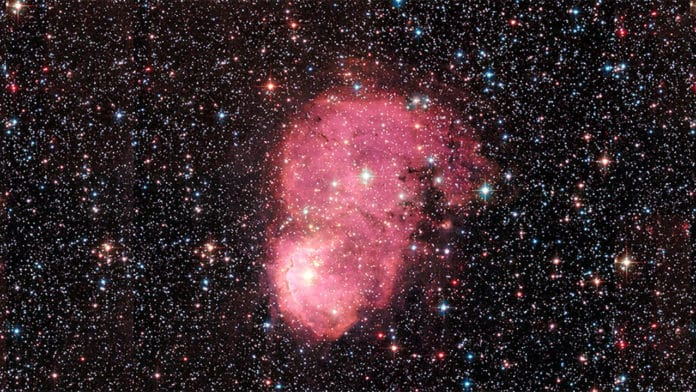The image shows NGC 248, about 60 light-years long and 20 light-years wide. They are two nebulas, situated to appear as one. The nebulas, together, are called NGC 248.
Initially discovered in 1834 by the astronomer Sir John Herschel, NGC 248 resides in the Small Magellanic Cloud, located approximately 200,000 light-years away in the southern constellation Tucana.
Small Magellanic Cloud is a dwarf galaxy that is a satellite of our Milky Way galaxy. The image is part of a study called Small Magellanic Cloud Investigation of Dust and Gas Evolution (SMIDGE).
The dwarf satellite galaxy contains several brilliant hydrogen nebulas, including NGC 248. Intense radiation from the brilliant central stars is heating hydrogen in each nebula, causing them to glow red.
The study’s principal investigator, Dr. Karin Sandstrom of the University of California, San Diego, said, “The Small Magellanic Cloud has between a fifth and a tenth of the amount of heavy elements that the Milky Way does. Because it is so close, astronomers can study its dust in great detail and learn about what dust was like earlier in the history of the universe.”
“It is important for understanding the history of our galaxy, too. Most of the star formation happened earlier in the universe, at a time when there was a much lower percentage of heavy elements than there is now. Dust is a critical part of how a galaxy works, how it forms stars.”
The image is part of a study called Small Magellanic Cloud Investigation of Dust and Gas Evolution (SMIDGE). The data used in this image were taken with Hubble’s Advanced Camera for Surveys in September 2015.
